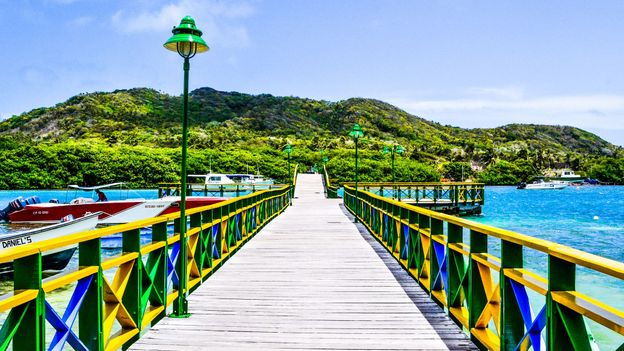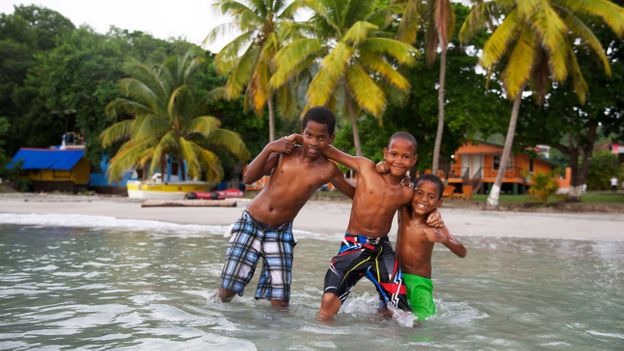A tiny, emerald-green island slowly materialised out of the Caribbean Sea. Extinct volcanic peaks rose along its spine with dense forests on their flanks and golden sand at the edges. My 26-seat turboprop plane descended rapidly, passing so close to a weather-boarded church it felt as if I could reach out and touch the spire. I braced for landing, but at the last moment the pilot pulled up sharply to a chorus of anguished gasps. The intercom crackled as he apologised for the abrupt change of course: “There are stray dogs on the runaway, so I’ll have to circle round and try again”.

As my heart slid back into my chest, I gazed down at the “sea of seven colours”, a vivid blue-green patchwork produced by the third-longest barrier reef system on Earth, and quickly lost count of the shades.
The least Colombian part of Colombia
Remote, unspoilt and little-visited, Providencia is the least Colombian part of Colombia. Spanning just 17sq km, the island has a tumultuous history and a distinct cultural identity. Located within the vast, Unesco-protected Seaflower Biosphere Reserve, Providencia lies almost 800km north-west of mainland Colombia and even further from the consciousness of most other Colombians. (Nicaragua, which has tried to claim sovereignty, is closer, but still lies more than 230km to the west.)
Getting to Providencia involves a convoluted and relatively expensive journey via its larger, more touristy sister island San Andrés, 50km south. As a result, visitor numbers were low – often fewer than 100 at a time – even before the Covid-19 crisis.
Providencia’s 5,000 residents have a mix of African-Caribbean, British, Miskito (an indigenous group from Central America), Spanish and French heritage. They speak an English-based Creole and are typically Baptists or Rastafarians, unlike mainland Colombians who are predominantly Catholic. The island’s singular character soon became apparent after my plane landed on the second attempt. Outside an airport the size of a village hall, my taxi driver, named Cordel, emphasised that locals saw themselves as “islanders” first, Colombians second.

“Providence is very safe, very peaceful,” he said on the drive to the west coast village of Freshwater Bay. “People fish, work in tourism, work their gardens. You can grow anything here – sweet potato, plantain, breadfruit, cassava, watermelon.


No comments:
Post a Comment